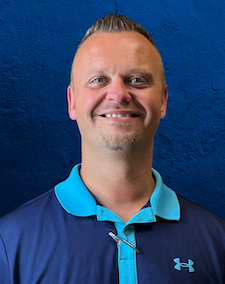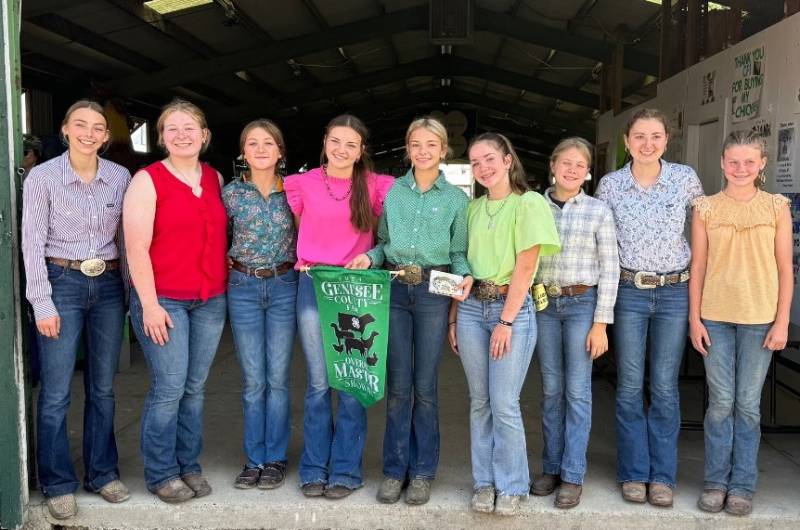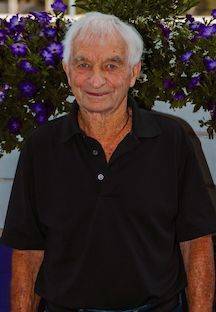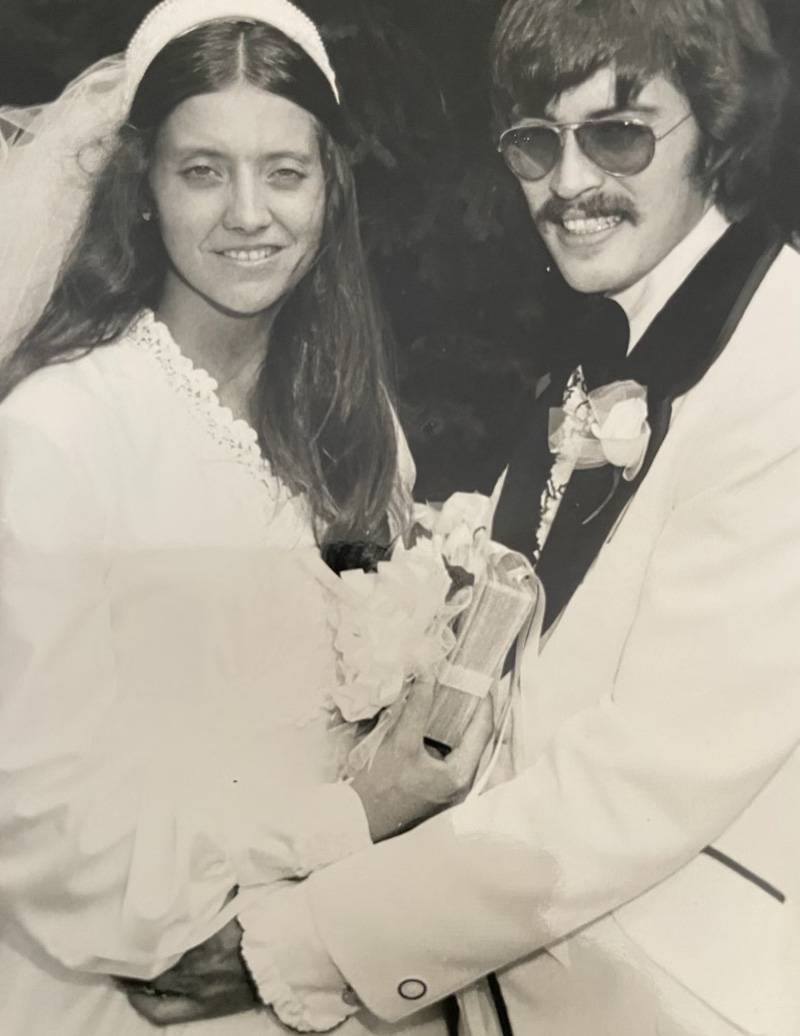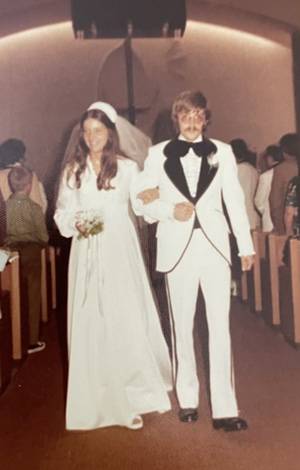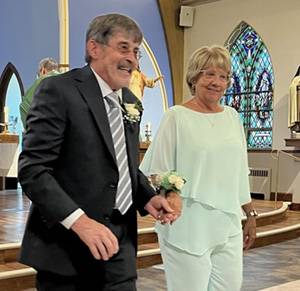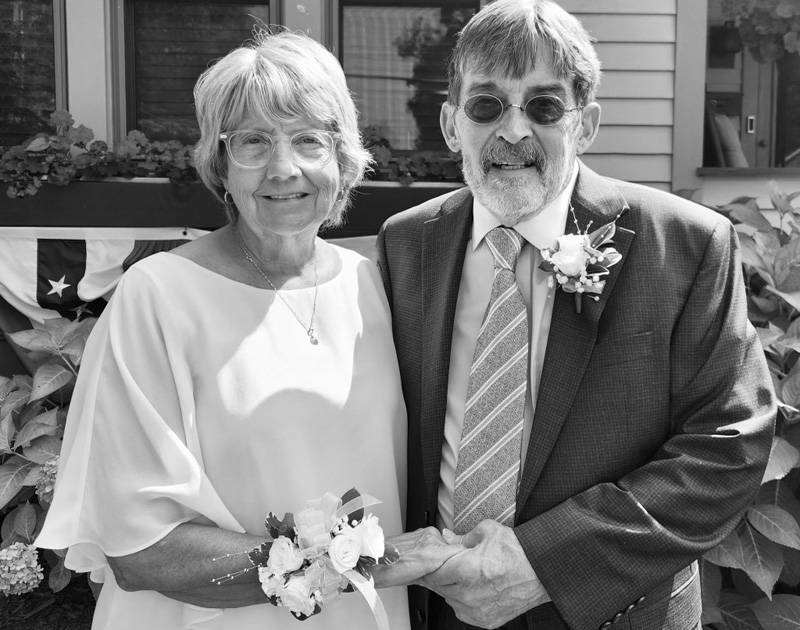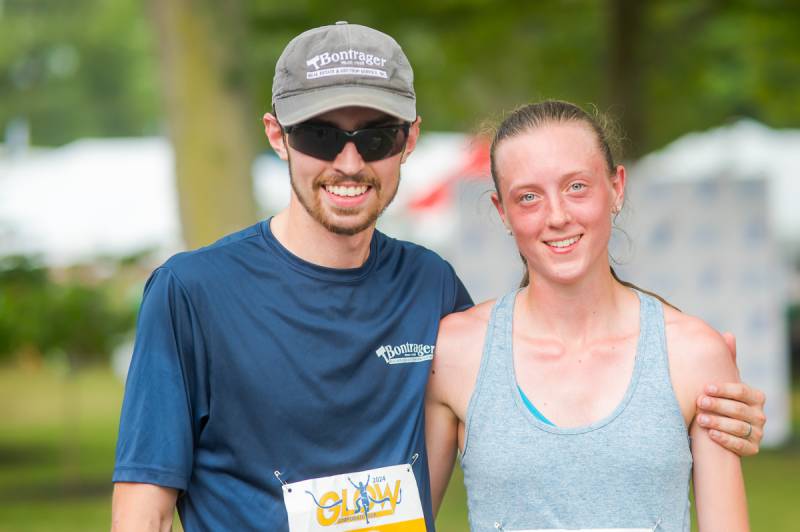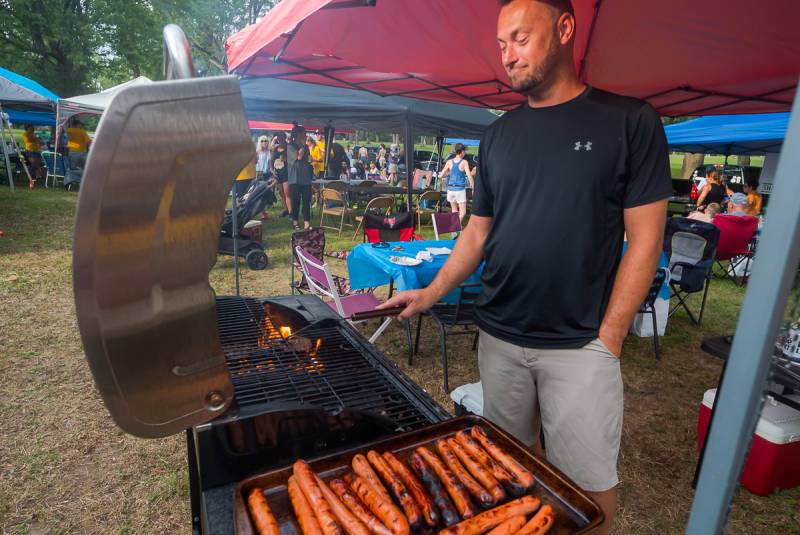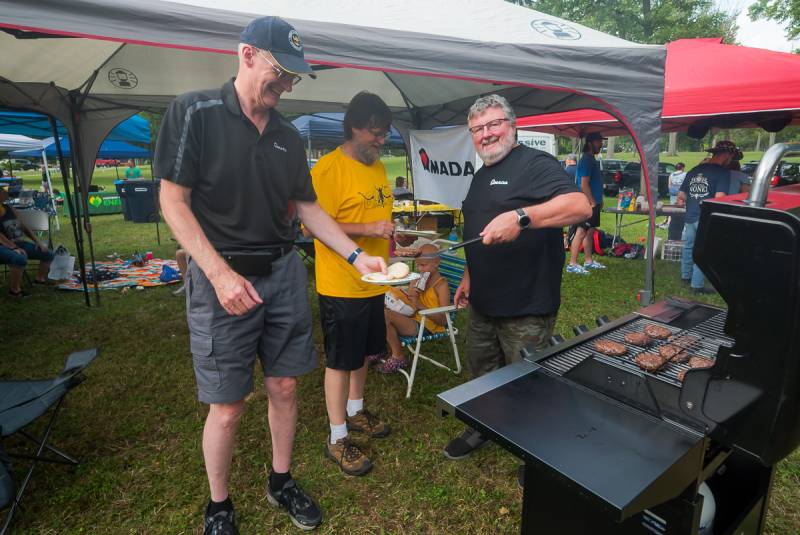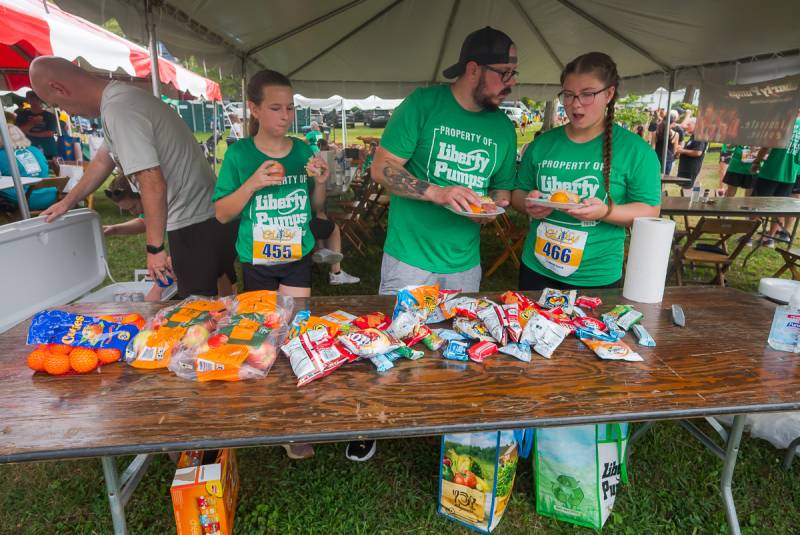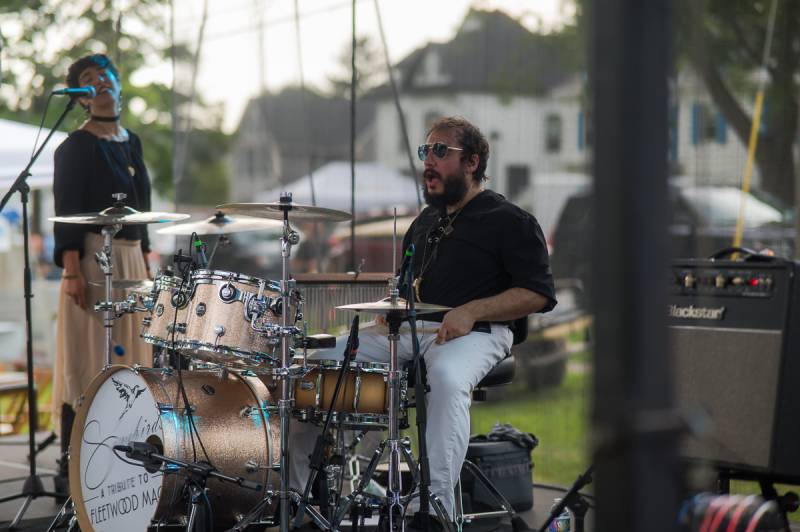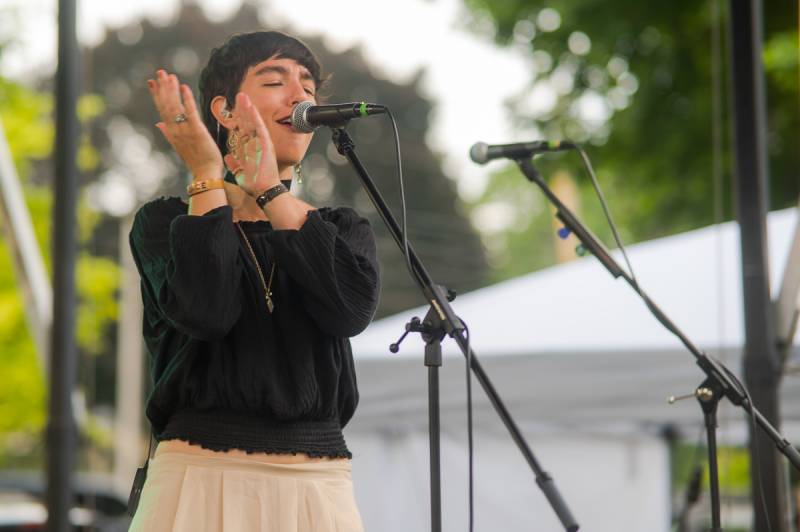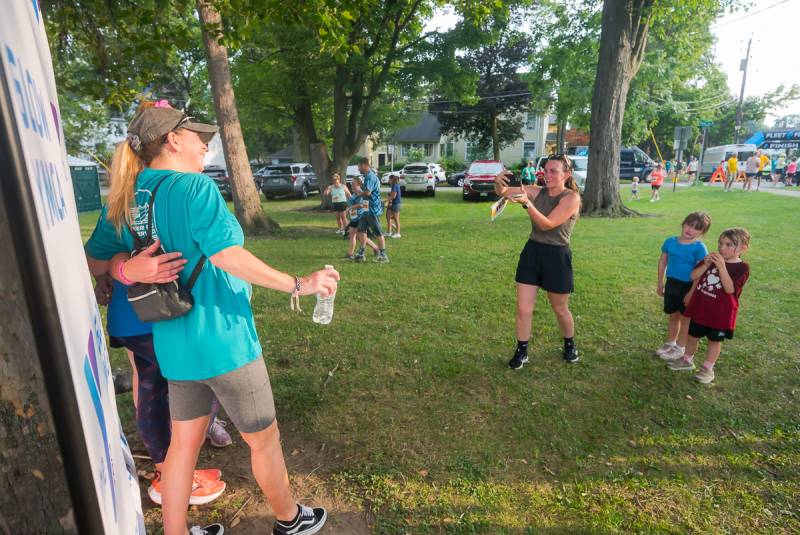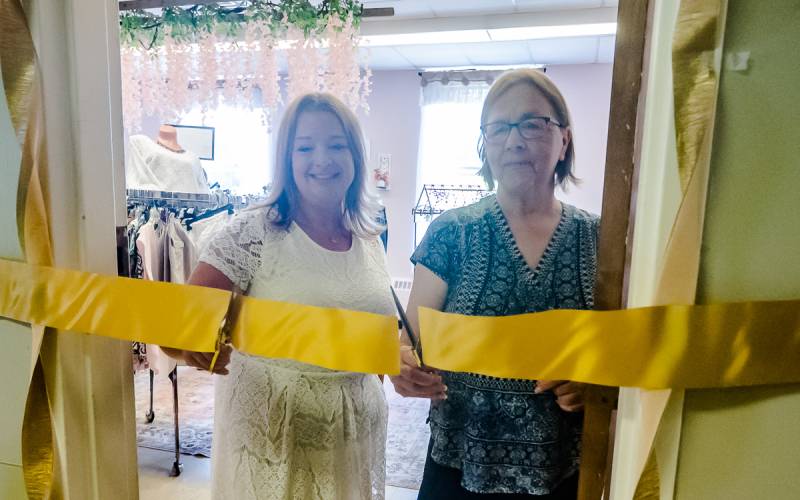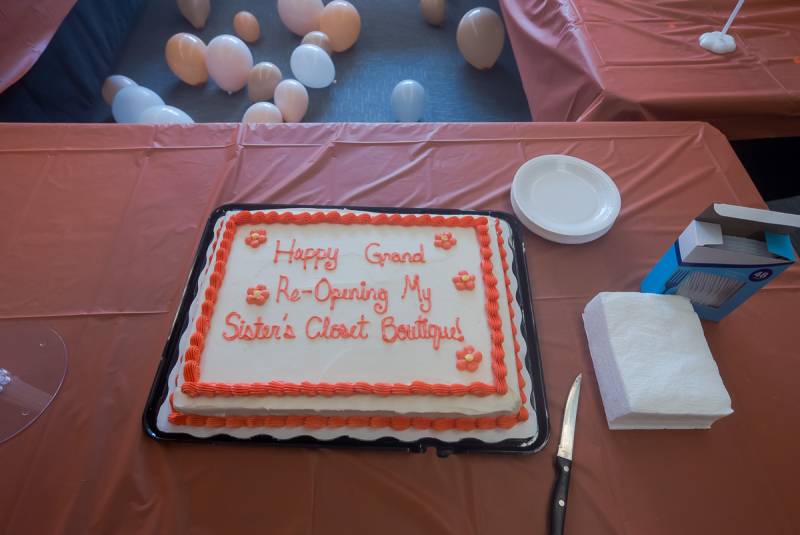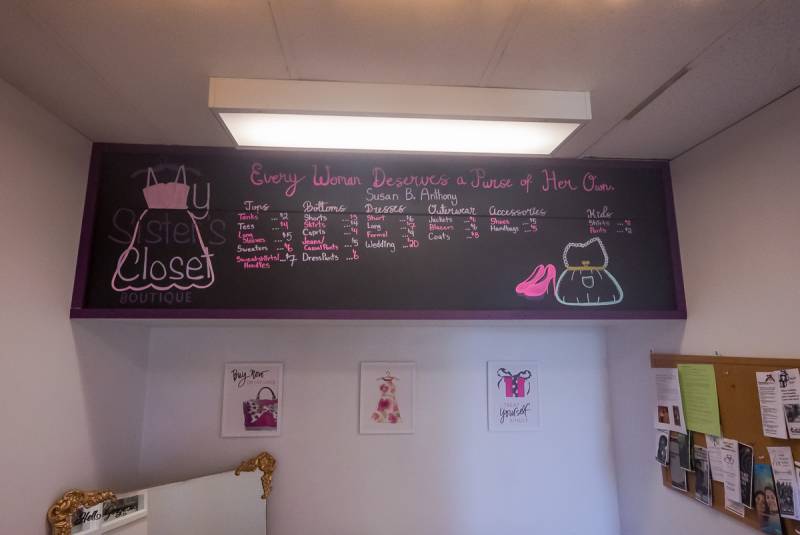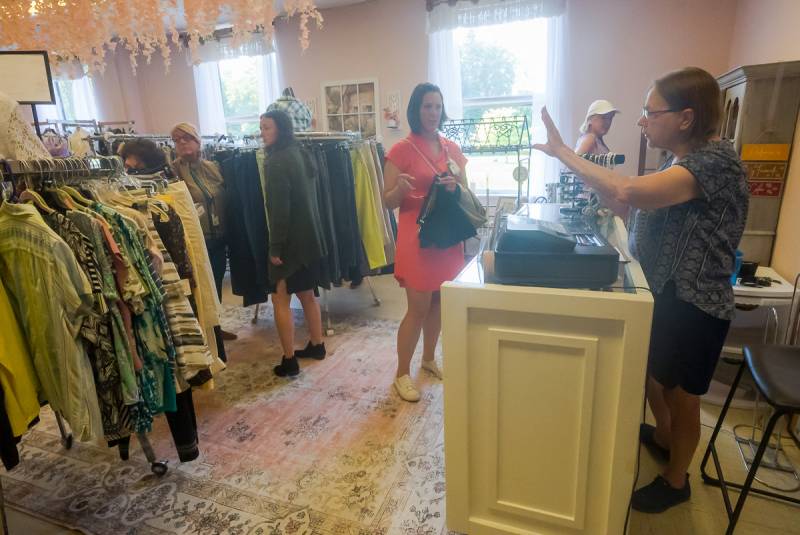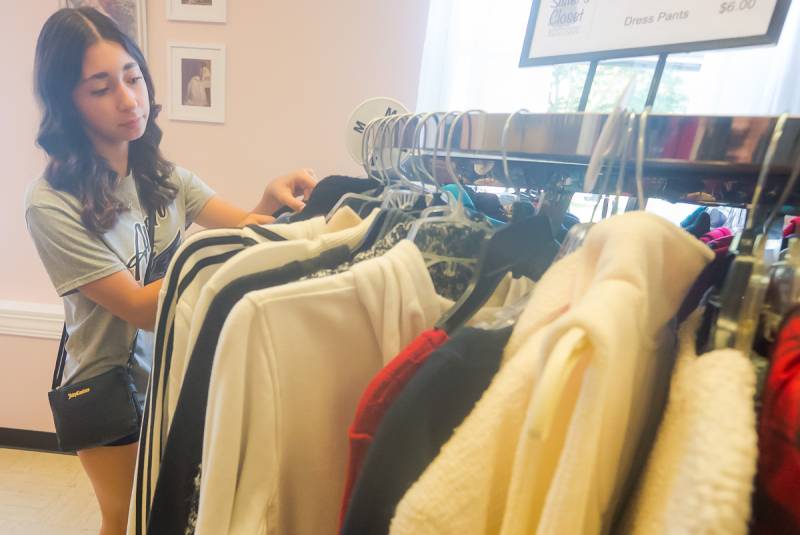New face and new position at Notre Dame still feels like 'coming home'

Photo by Howard Owens
With a parent and siblings who attended Batavia Notre Dame High School, Julia Rogers’ story may sound strangely familiar to that of fellow colleague and newly promoted principal Lindsay Warner.
But then again, there are likely many stories of local residents with family members past and present connected to the only Genesee County-based Catholic institution for students through grade 12.
Nonetheless, it’s a tradition that Rogers cherishes, especially since her mother, Sheila Tehan Rogers, was a graduate of the very first Class of 1955, and her dad, the late Bradley Rogers, coached for the Fighting Irish in Batavia.
“It’s very powerful,” Rogers said of her new role as director of instruction, curriculum and assessment. “I’m definitely following in their footsteps. It’s like coming home.”
A native of Batavia, Rogers opted to attend public schools while some of her six siblings went to Notre Dame. She wanted to teach languages — Spanish and French especially — and Batavia City Schools offered both of those classes.
As it turns out, the city school district drew Rogers in, for a 31-year career that included teaching and administrative roles and also included coordinating initiatives with community organizations, families and students. Then Notre Dame’s board opted to create a brand new position at the school, and it seemed ripe for her career path, Rogers said.
“It came along at the perfect time for what I wanted,” she said. “I worked in curriculum office as the coordinator of instruction and assessment prior to COVID. I will be assisting staff and teachers in building their instruction. I will be more of a teammate assisting the teachers with instruction and brainstorming ideas and opportunities for learning and crafting their art of teaching.”
She will be in charge of assessments, from Regents and SATs and PSATs, and working on local assessment that teachers will be giving to students and working with various grants.
Even as a child, Rogers wanted into the academic scene. As the oldest of seven siblings, she and her family members would play school, and later she discovered the thrill of real life learning in progress.
“It's seeing the light bulb turn on for children when they get something, it is the most amazing sight that you could see as a teacher and as an educator. There's no words for it,” she said. “It's like a Christmas morning. It's that look that a student gets, a child gets, when they've learned something new and they have that sense of accomplishment, it’s like no other, and that's truly why I do what I do.
“This just takes it to another level, where it’s a cabinet role,” she said. “It’s a different impact that you can have.”
Will there be a learning curve between public and private schools?
“I definitely think there will be,” she said. Private schools have different requirements and reporting needs than public schools, though, students are striving for and achieving the same types of diplomas in the end, she said.
What has changed the most about curriculum, what needs to be considered?
“The biggest thing with curriculum is you want to stay ahead of the game. You want to, in this day and age, with curriculum, you have to think about what's going on in society, but also keeping in mind, we're a techno savvy community. When you look at the young people in our community, and I used to describe it as the remote control era, where you don't just stick with one TV show when a commercial comes on, you pop to another one, or you're fast forwarding, or you're moving,” she said. “And as educators, you've got to keep that same energy of keeping things interesting for the students in your classroom, because they just can't get up and leave your class to go somewhere else. You've got to keep that intriguing to them.
“So I think that's even different from when we were in school. You know, it's just everything's faster pace. I guess you would say maybe that's age too, but you can keep that out of it, but … I think also, to make our students be successful in the future, they have to have those opportunities of adding innovation to their learning.”
For example, students that may be into video games may be more adaptable to an opportunity to learn about becoming a game designer, she said.
“One of my first steps is really to look at the curriculum that is being taught here at Notre Dame and also talking to the students to see what they want to do in their future and see how we can assist supporting their dreams and aspirations in their curriculum that they’re learning about,” she said. “And I also feel that we have a very unique opportunity here at Notre Dame to really utilize the Christian faith and the Catholic faith to enhance the students’ learning and making sure that we are also graduating good Christian students here at Notre Dame who have a firm grasp on their beliefs and a great foundation to rely on in the future.”
An important factor for her is that she’s still in the community even though not at the city school district any more: “I’m still working with children of Batavia and now expanding it to children of neighborhood communities,” she said. “My first love is educating children.”
Rogers’ first 30 to 60 days will be filled with meeting the school community as she does a lot of “learning and learning and learning” about this new position and how to proceed toward year one. She can envision a graduation day for students and herself.
“There will be a sense of, wow, this was a powerful year for all of us, and successful for the students,” she said. “The students are going to be graduating, and I will be graduating from year one.”
She’s a believer of community service and is a member of Batavia Rotary, Salvation Army’s Advisory Board, Holland Land Office Museum Board of Directors and a second year chair person for the Alzheimer’s walk.



